Overview
Chinese Name: 武夷山
English Name: Mount Wuyi, Wuyi Mountains, Wuyishan
Location: Fujian and Jiangxi Province
Type: Natural and human landscape
Rating Level: AAAAA (5A)
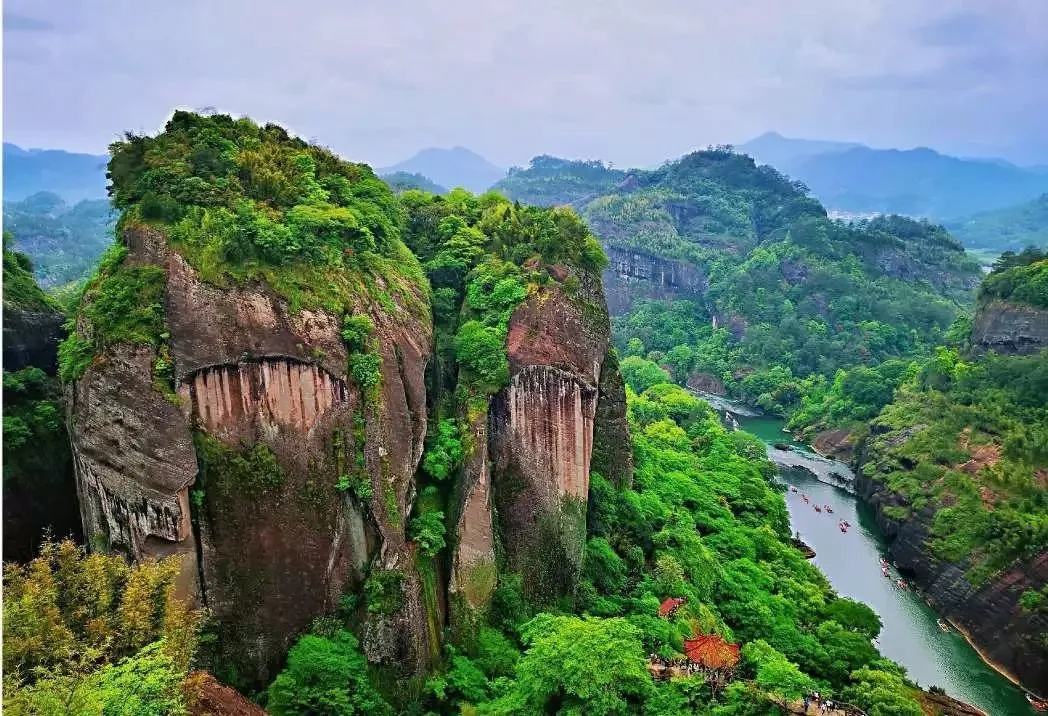
Brief Introduction
Mount Wuyi武夷山, located at the junction of Jiangxi and Fujian provinces in the northwest, covers a total area of 999.75 square kilometers at the southeast foot of the northern section of the Wuyi Mountains. It is a typical Danxia landform and one of the first national key scenic spots. Wuyi Mountains preserve the primary forest ecosystem characteristic of the mid-subtropics.
Mount Wuyi is a world cultural and natural heritage, a world Biosphere Reserve, a national key Cultural Relics Protection unit, a National key Scenic spot, a National AAAAA tourist attraction, a National Nature Reserve, a National Water Conservancy Scenic Spot, a National Eco-tourism Demonstration Area, National civilized scenic tourist area demonstration point
According to the World Heritage Committee, Mount Wuyi is the most outstanding area for biodiversity conservation in southeast China and a refuge for a large number of ancient, relict species, many of them endemic to China. The serene beauty of the dramatic gorges of the Nine Bend River, with its numerous temples and monasteries, many now in ruins, provided the setting for the development and spread of Neo-Confucianism, which has been influential in the cultures of East Asia since the 11th century.

Human settlement on the slopes of Mount Wuyi can be traced back 4,000 years by archeological remains. During the Western Han Dynasty, the ancient city of Changchun was the capital of the Minyue kingdom. In the 7th century, the Wuyi Palace was built for emperors to conduct sacrificial activities, a site that tourists can still visit today. The mountains were an important center of Taoism and later Buddhism.
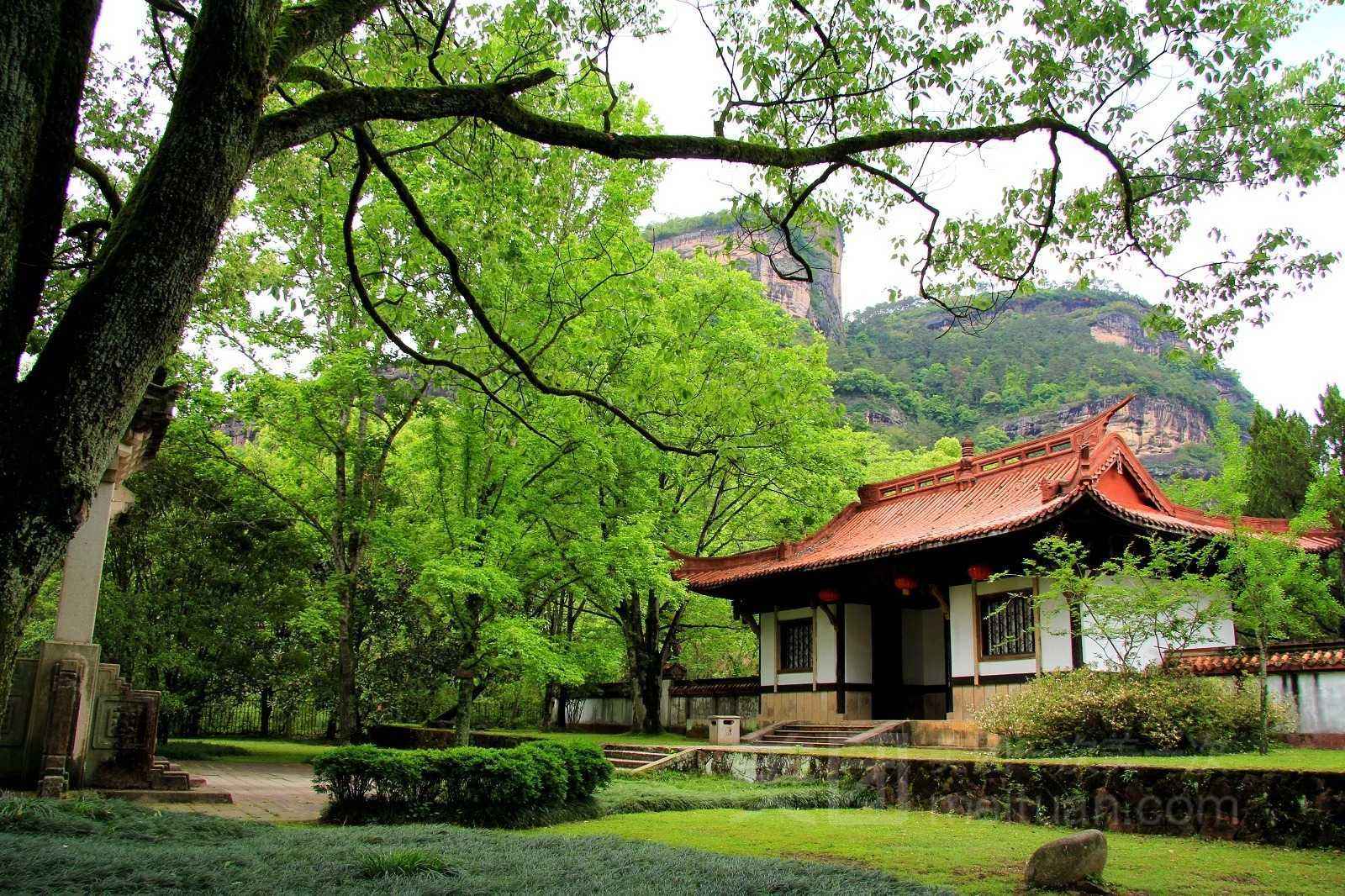
The Wuyi Mountains have a long history of tea cultivation. The four most widely known varieties of Wuyi rock-essence tea are referred to as the Si Da Ming Cong (‘Four Great Cultivars’) teas: Da Hong Pao (‘Big Red Robe’), Tie Luo Han (‘Iron Arhat‘), Bai Jiguan (‘White Cockscomb’), and Shui Jin Gui (‘Golden Water Turtle’). The Lapsang souchong also originates from the area.
Attractions include mountains much like those at Guilin, temples and other historic buildings, and raft rides down a sensational river canyon. It is renowned for its natural landscape and suitable summer resort in China, attracting worldwide travelers every year.
What is worth to visit and see?
Culture heritage
From the perspective of history and science, Mount Wuyi has outstanding and universal value. It can not only provide a unique testimony to the ancient civilization and cultural tradition that has disappeared but also has a direct and substantial connection with the Neo-Confucianism civilization, which meets the world cultural heritage standards 3 and 5.
There are 18 immortal gully ship coffins for thousands of years; Zhu Xi, You Zuo, Xiong He, Cai Yuanding, and other Confucian college ruins 35; more than 450 cliff carvings which can be regarded as the treasure house of ancient Chinese calligraphy art, among which there are 13 bans of ancient officials and villagers to protect Wuyi landscape and animals and plants; more than 60 temples and ruins of monastic and Taoist temples.
Gully ship coffin架壑船棺, dating back to more than 3750 years ago, is the earliest hanging coffin site found at home and abroad. Mount Wuyi has rich historical and cultural remains. As early as more than 4,000 years ago, there were ancestors working and living here, and gradually formed the unique “ancient Min clan” culture and the subsequent “Minyue clan” culture, stretching for more than 2,000 years, leaving a large number of cultural relics. The main cultural features of this period are “gully ship coffin”, “Hongqiao plate” and the ruins of the Minyue King City of Han Dynasty, which covers an area of 480,000 square meters.
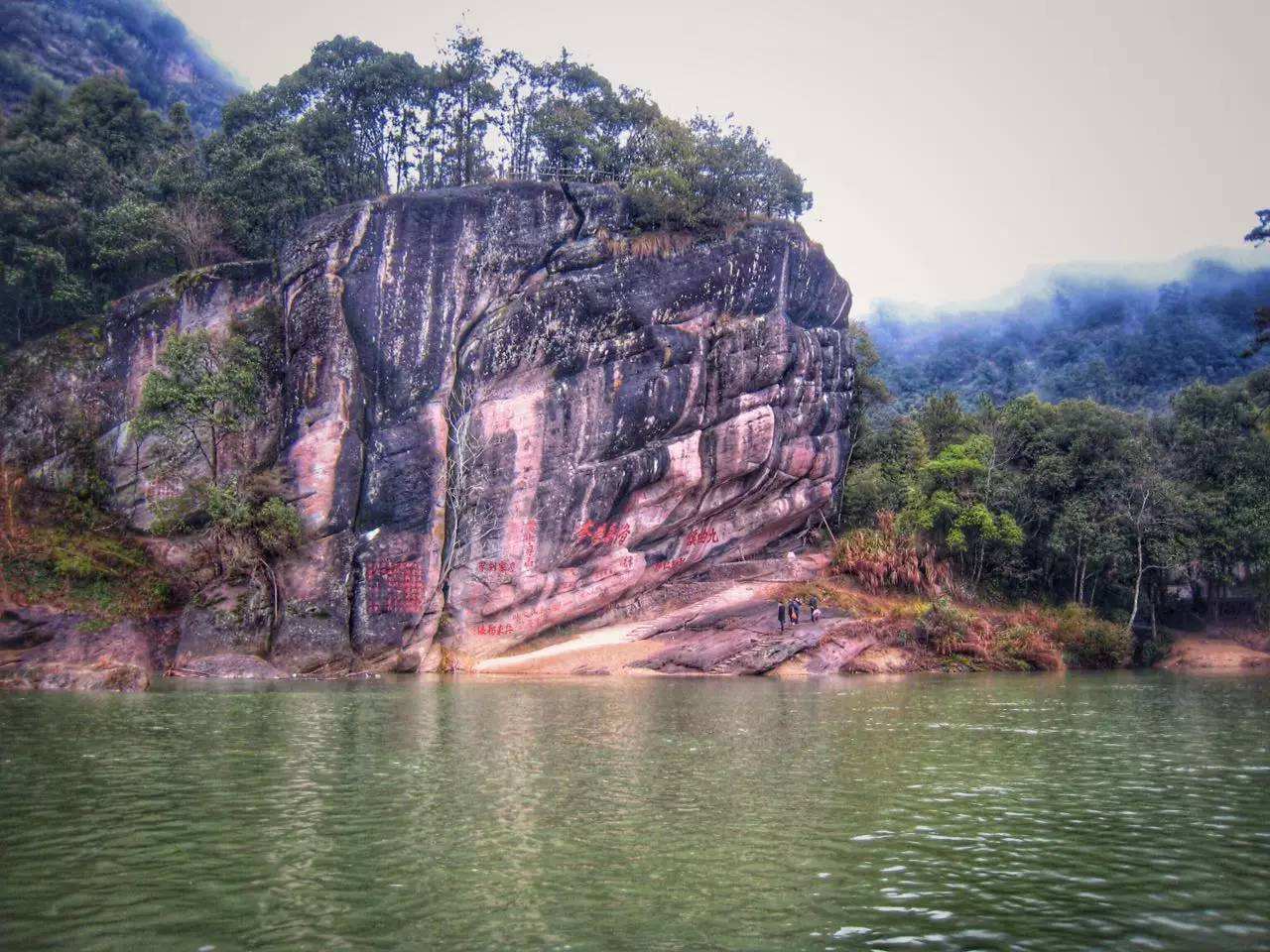
The Site of Mount Wuyi武夷山汉城遗址 is a “modern” city dating back more than 2200 years. In December 1999, it was listed in the World Cultural Heritage list, and it is also the only royal city site of The Han Dynasty listed in the “World Heritage” list in China. Covering an area of 480,000 square meters, the ruins are of great historical, cultural, and research value. It is a typical representative of ancient Southern Cities in China and occupies an important position in the architectural history of China and the world.
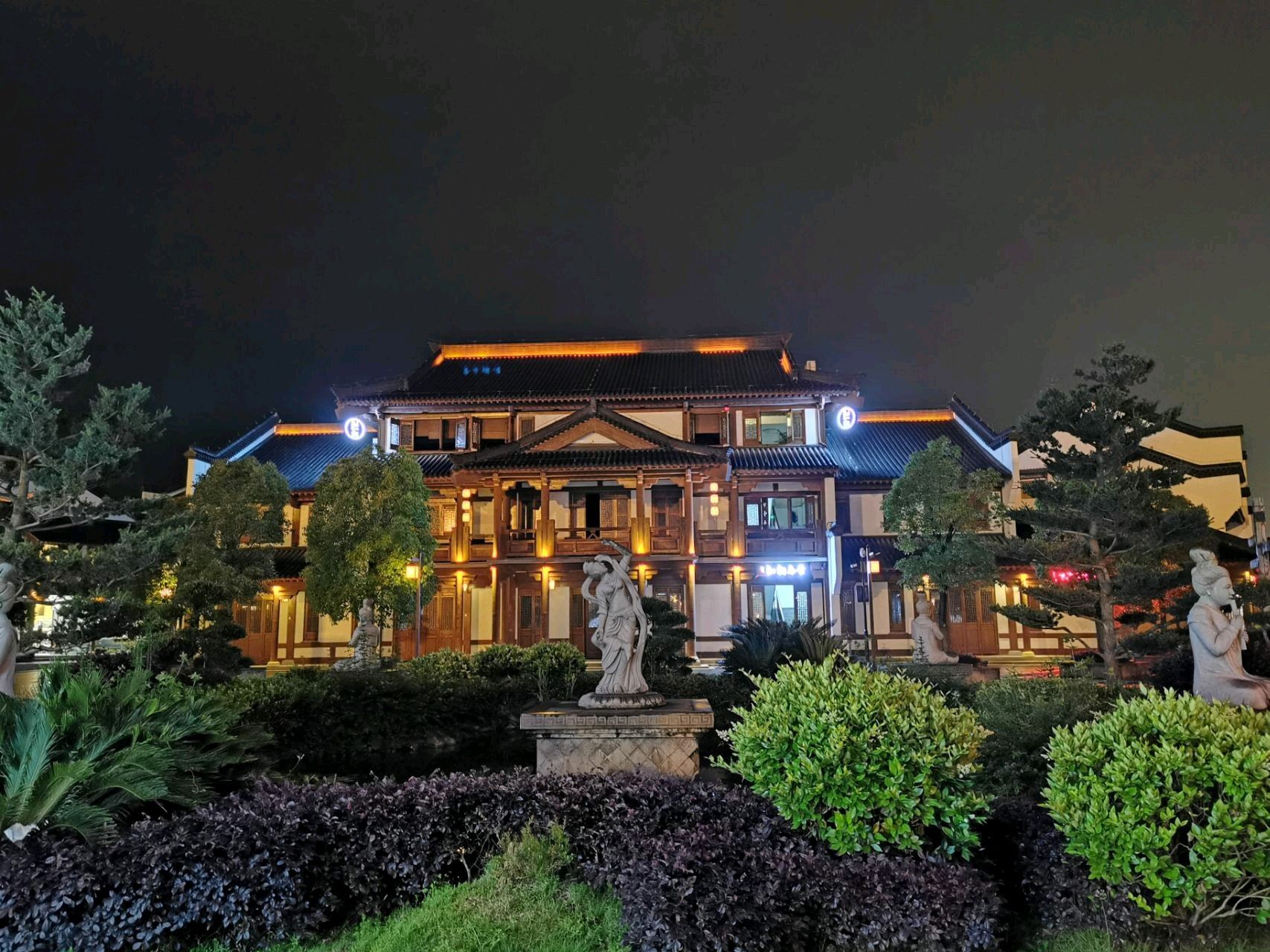
Erhu Academy鹅湖书院 is located in the north of Mount Wuyi lead mountain in Jiangxi province. Occupying an area of about 8,000 square meters, Erhu Academy was once a famous cultural center, especially the Meeting of The Neo-Confucianists Zhu Xi and Lu Jiuyuan in the Southern Song Dynasty, which became a far-reaching event in the history of Chinese Confucianism.

Natural heritage
Nine-bend River九曲溪 originates from the Wuyi Mountain Nature Reserve and is 62.8 kilometers long. A section of the river entering the scenic area is not only affected by the natural bending of the river, but also controlled by the direction of multiple rock strata fractures, forming a deep river bend, making the river 9.5 kilometers long, the linear distance is only 5 kilometers, and the curvature is 1.9.
The water flow of the Nine-bend River is clear and abundant, and the water quality reaches the national groundwater standard I. Taking a bamboo raft down the river to view the beautiful scenery of the mountains is one of the most popular activities in Wuyishan.

Located in the central part of Wuyishan, Heavenly Tour Peak天游峰 410 meters above sea level, is surrounded by Nine-bend Stream on three sides. Standing at the top of Heavenly Tour Peak, visitors can have a panoramic view of Mt. Wuyishan and the sea of clouds after rain or at dawn, hence the name “Tian You”.
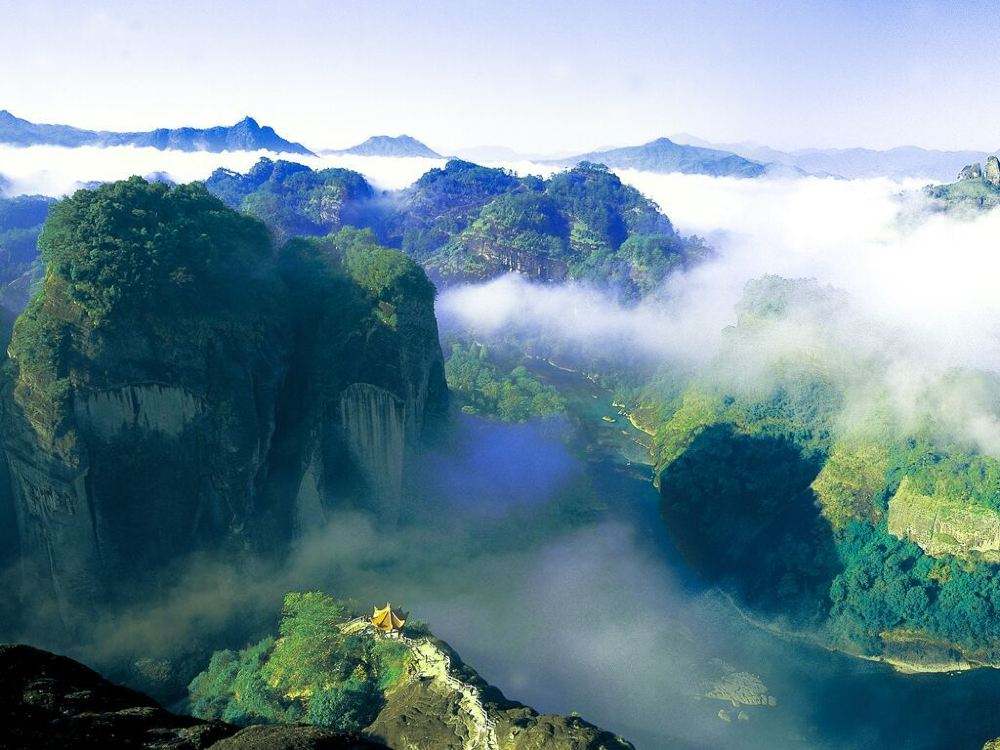
Located in the center of Mount Wuyi Scenic Area, Da Hongpao Scenic Area大红袍景区 is a deep valley controlled by east-west fault structure. This magical and enchanted valley produces the best tea in Wu Yi Shan and is a tranquil and beautiful place.
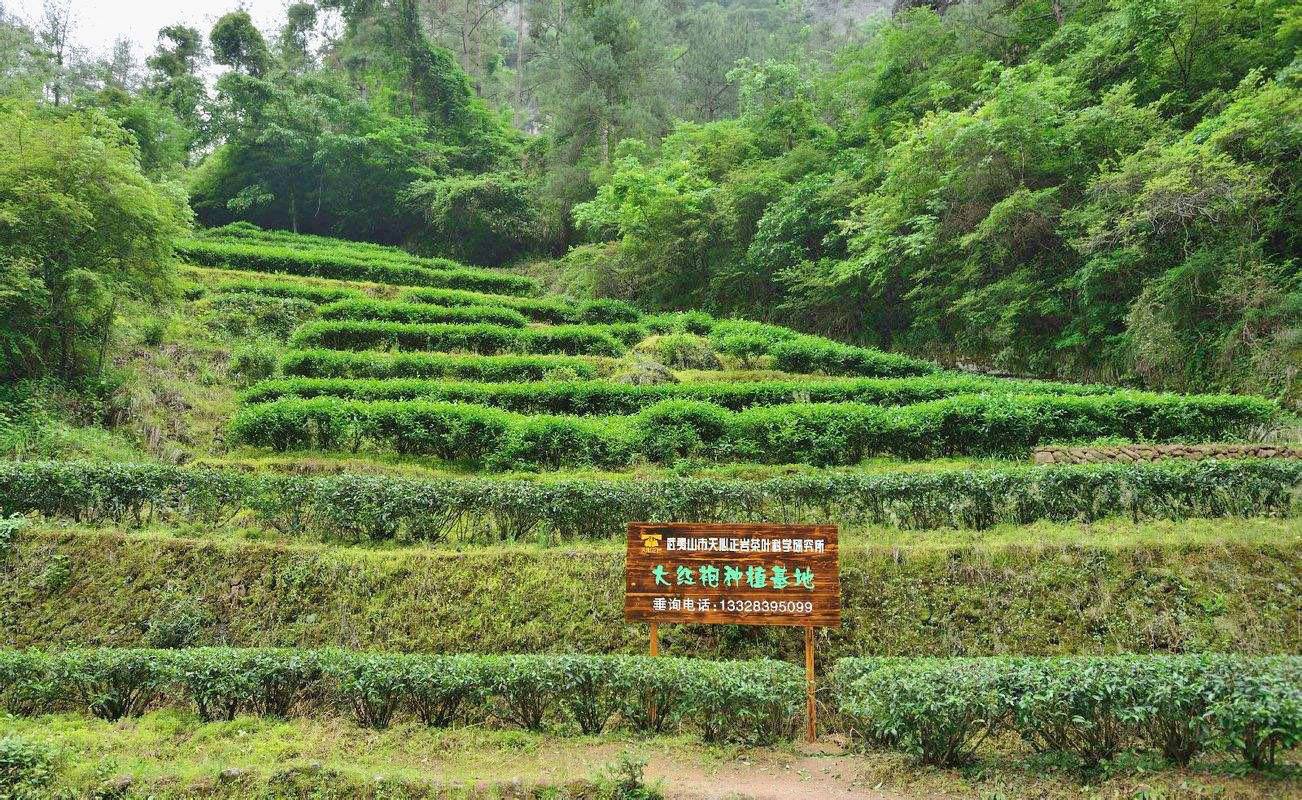
Water Curtain Cave水帘洞 is one of 72 caves on Mount Wuyi. There are two large waterfalls pouring from the top of the cave at a height of over 100 m (330 ft), like two bead curtains falling from the sky.